Intel SSD 730 (480GB) Review: Bringing Enterprise to the Consumers
by Kristian Vättö on February 27, 2014 12:00 PM EST- Posted in
- Storage
- SSDs
- Intel
- Intel SSD 730
Random Read/Write Speed
The four corners of SSD performance are as follows: random read, random write, sequential read and sequential write speed. Random accesses are generally small in size, while sequential accesses tend to be larger and thus we have the four Iometer tests we use in all of our reviews.
Our first test writes 4KB in a completely random pattern over an 8GB space of the drive to simulate the sort of random access that you'd see on an OS drive (even this is more stressful than a normal desktop user would see). I perform three concurrent IOs and run the test for 3 minutes. The results reported are in average MB/s over the entire time. We use both standard pseudo randomly generated data for each write as well as fully random data to show you both the maximum and minimum performance offered by SandForce based drives in these tests. The average performance of SF drives will likely be somewhere in between the two values for each drive you see in the graphs. For an understanding of why this matters, read our original SandForce article.

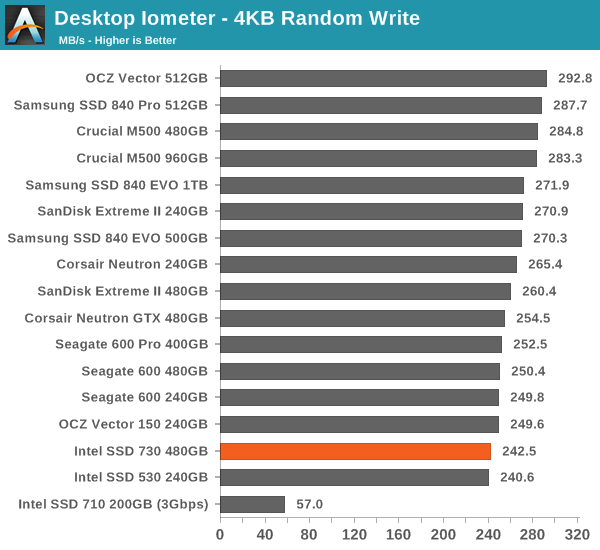
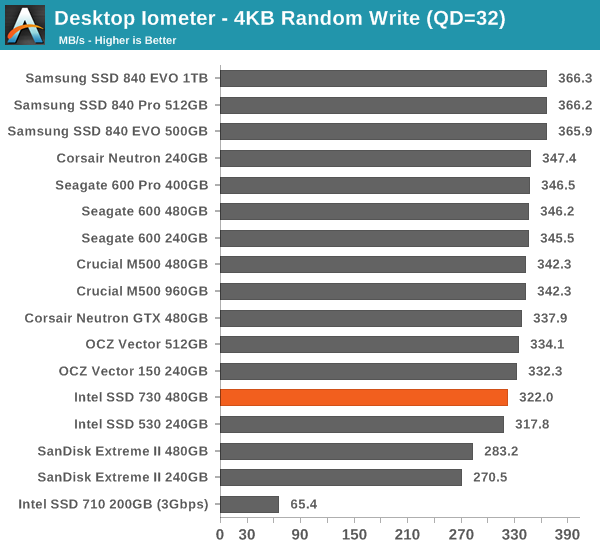
The SSD 730 isn't the fastest in peak performance because that's irrelevant in the enterprise space. We are still looking at decent random write performance and the random read performance is actually surprisingly good.
Sequential Read/Write Speed
To measure sequential performance I ran a 1 minute long 128KB sequential test over the entire span of the drive at a queue depth of 1. The results reported are in average MB/s over the entire test length.
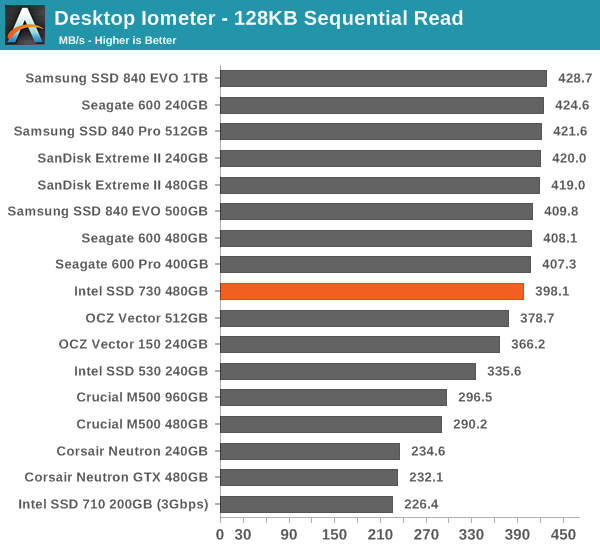
The same goes for sequential performance: the 730 is an average performer with focus on consistency.
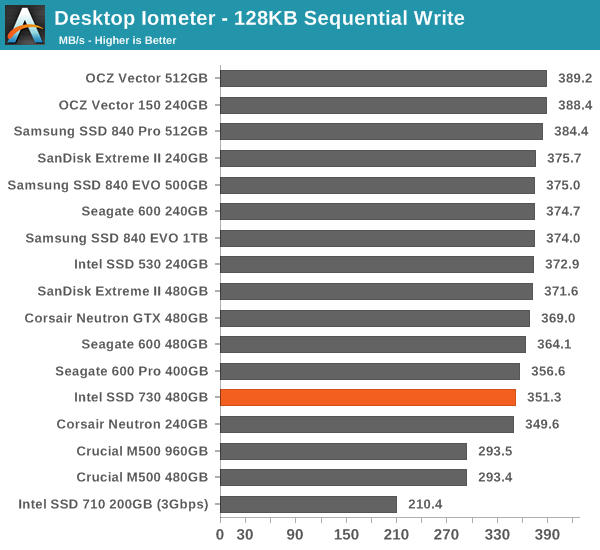
AS-SSD Incompressible Sequential Read/Write Performance
The AS-SSD sequential benchmark uses incompressible data for all of its transfers. The result is a pretty big reduction in sequential write speed on SandForce based controllers.
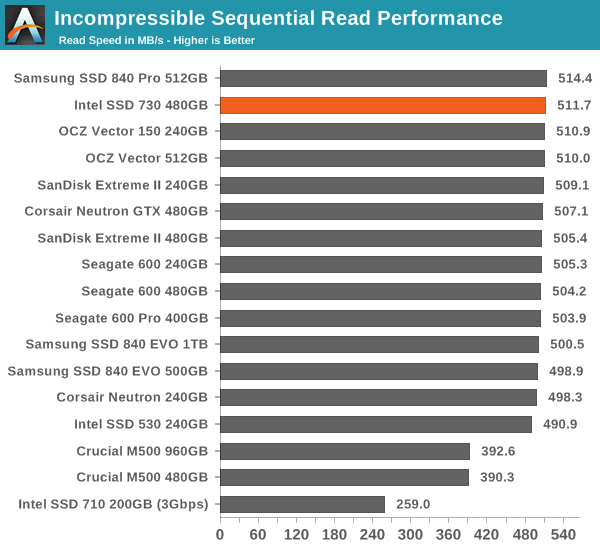
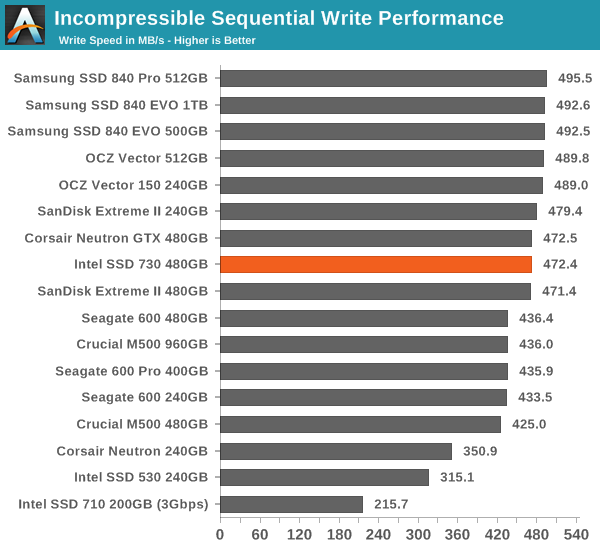










96 Comments
View All Comments
gevorg - Thursday, February 27, 2014 - link
Whats up with the satanic skull? LOL!DanNeely - Thursday, February 27, 2014 - link
The tacky gamer bling is intended to convince corporate purchasing to buy the more expensive S3500 instead.littlebitstrouds - Thursday, February 27, 2014 - link
Well aren't you mean today. Just because it doesn't fit your style, doesn't mean you need to be a jerk about it.Homeles - Friday, February 28, 2014 - link
I thought it was funny!alyarb - Friday, February 28, 2014 - link
and insightful! it's not like you saw skulltrail boards in 2P workstations either. you have to pay extra to get the plain green board.ddriver - Friday, February 28, 2014 - link
This hard drive is poisonous.tabascosauz - Saturday, March 1, 2014 - link
It's probably like the skull on Intel's motherboards; just a logo that's been there for so long that it's become an icon of Intel in the consumer market. I still like the old peel-up-for-silicon Intel design on my SSD 530 though, but not that it matters since there's only one case that showcases SSDs (H440).Anonymous Blowhard - Friday, February 28, 2014 - link
sarchasm (sar-kaz-im)1. the gulf between the author of sarcastic wit and the person who doesn't get it
DanNeely - Friday, February 28, 2014 - link
I intended describing it as 'tacky gamer bling' as being charitable. If I felt like being mean I'd've used something like 'eye searingly hideous' instead.Oxford Guy - Thursday, March 6, 2014 - link
It's really idiotic.Intel looks like a foolish old man trying to be cool with that.